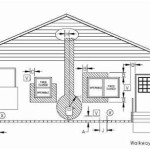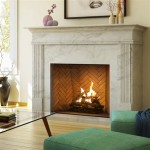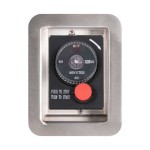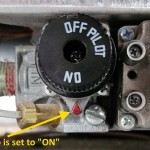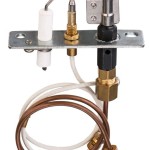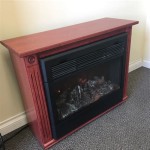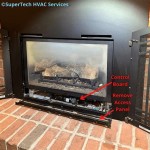Indoor Outdoor Fireplace: Double Sided - A Comprehensive Guide
A double-sided fireplace, also known as a see-through fireplace, offers a unique and visually stunning architectural feature. This type of fireplace is designed to be viewed from two adjacent or opposing rooms, creating a focal point that seamlessly connects indoor and outdoor living spaces. While typically associated with interior designs that link a living room with a dining room, the most compelling application often involves bridging the gap between an interior space and an outdoor patio or deck. This setup provides both aesthetic appeal and practical heating solutions for both environments.
Choosing a double-sided indoor-outdoor fireplace requires careful consideration of several factors, including building codes, fuel type, venting options, and design aesthetics. Understanding these elements is crucial to ensuring a safe, efficient, and visually pleasing installation. This article will delve into the key aspects of double-sided indoor-outdoor fireplaces, highlighting their benefits, design considerations, installation guidelines, and maintenance requirements.
Benefits of a Double-Sided Indoor-Outdoor Fireplace
The primary advantage of a double-sided indoor-outdoor fireplace lies in its ability to connect two distinct living areas. This connection enhances the overall flow of the home and creates a sense of continuity between the interior and exterior. Beyond the aesthetic appeal, this fireplace offers several other benefits.
Firstly, it extends the usability of outdoor spaces. By providing a heat source on a patio or deck, the fireplace allows homeowners to enjoy their outdoor areas for a longer period, even during cooler months. This is particularly beneficial in regions with temperate climates that experience significant temperature fluctuations throughout the year.
Secondly, a double-sided fireplace can increase the value of a property. Its unique design and functionality make it a desirable feature for potential buyers, adding to the home's overall appeal and marketability. A well-designed and properly installed fireplace demonstrates thoughtful architectural planning and enhances the perceived luxury of the home.
Thirdly, the fireplace can act as a natural divider between spaces while still maintaining an open and airy feel. Instead of a solid wall, the see-through design allows light to flow freely between the rooms, creating a brighter and more inviting atmosphere. This is especially useful in open-concept floor plans where delineating distinct zones is desirable.
Finally, the dual functionality of the fireplace provides heating to two areas simultaneously, allowing for efficient use of energy and resources. Whether fueled by gas, wood, or electricity, the heat generated by the fireplace can contribute to the overall comfort of both the indoor and outdoor environments, potentially reducing reliance on other heating systems.
Design Considerations for Indoor-Outdoor Fireplaces
Designing a double-sided indoor-outdoor fireplace requires careful planning and attention to detail. Several factors must be considered to ensure that the fireplace integrates seamlessly with the existing architecture and meets the specific needs of the homeowner.
The first consideration is the structural integrity of the wall that will house the fireplace. A double-sided fireplace is significantly heavier than a standard fireplace, and the wall must be able to support the additional weight. Consulting with a structural engineer is essential to ensure that the wall can safely accommodate the fireplace and that any necessary reinforcements are made.
Secondly, the design of the fireplace should complement both the interior and exterior aesthetics. Coordinating the materials, colors, and style of the fireplace with the existing design elements of both spaces is crucial to creating a cohesive and harmonious look. For example, a rustic stone fireplace may be well-suited for a traditional home with a natural outdoor setting, while a sleek, modern fireplace with stainless steel accents might be more appropriate for a contemporary home.
Thirdly, the placement of the fireplace should be carefully considered to maximize its impact and functionality. Ideally, the fireplace should be located in an area that is easily accessible from both the indoor and outdoor spaces and that provides adequate seating and viewing areas. The orientation of the fireplace should also be taken into account to minimize the impact of wind and weather on the outdoor flame.
Fourthly, the dimensions of the fireplace should be proportionate to the size of the rooms it serves. A fireplace that is too large can overwhelm the space, while a fireplace that is too small may not provide adequate heat or visual impact. It’s important to balance the size of the fireplace with the overall scale of the surrounding architecture to create a visually pleasing and functional design.
Finally, the choice of fuel source will significantly impact the design and functionality of the fireplace. Gas fireplaces offer convenience and ease of use, while wood-burning fireplaces provide a more traditional and authentic experience. Electric fireplaces offer a clean and efficient alternative with no venting requirements, but may lack the ambiance of gas or wood options. The selection of fuel source will affect venting requirements, as discussed later.
Installation Guidelines and Safety Precautions
Installing a double-sided indoor-outdoor fireplace is a complex task that requires specialized knowledge and expertise. Improper installation can lead to safety hazards, such as gas leaks, carbon monoxide poisoning, and structural damage. Therefore, it is essential to hire a qualified and licensed contractor to handle the installation process.
Before beginning the installation, it is imperative to obtain all necessary permits and approvals from the local building authorities. Building codes vary depending on the region, and it is the homeowner's responsibility to ensure that the installation complies with all applicable regulations. The contractor should be familiar with local codes and able to guide the homeowner through the permitting process.
The venting system for the fireplace must be properly designed and installed to ensure safe and efficient operation. The type of venting system required will depend on the fuel source. Gas fireplaces typically require direct-vent or B-vent systems, while wood-burning fireplaces require a chimney. Electric fireplaces do not require venting.
The installation of the venting system should be performed by a qualified professional to ensure that it is properly sealed and insulated. Any leaks in the venting system can allow dangerous gases, such as carbon monoxide, to enter the home. Regular inspections of the venting system are recommended to ensure that it remains in good working condition.
The area surrounding the fireplace should be constructed of non-combustible materials to prevent the risk of fire. This includes the hearth, surround, and any nearby walls or ceilings. Local building codes specify the required clearances for combustible materials, and these clearances must be strictly adhered to.
A safety barrier, such as a screen or glass door, should be installed to prevent accidental contact with the flames. This is particularly important if the fireplace is accessible to children or pets. The safety barrier should be made of durable, heat-resistant materials and should be designed to withstand high temperatures.
Gas fireplaces require a gas line connection, which should be installed by a licensed plumber or gas fitter. The gas line should be properly sized to provide adequate gas pressure to the fireplace. A gas shut-off valve should be installed near the fireplace for emergency use.
Carbon monoxide detectors should be installed in the vicinity of the fireplace to provide early warning of any carbon monoxide leaks. These detectors should be tested regularly to ensure that they are functioning properly. It is advisable to have a professional inspection of the fireplace system annually. This includes cleaning the chimney or ventilation, inspecting the gas connections, and checking the overall functionality.
Fuel Options and Their Implications
The choice of fuel significantly impacts the operational characteristics, aesthetic qualities, and environmental footprint of a double-sided fireplace. Each fuel type possesses unique advantages and disadvantages that must be weighed during the selection process.
Wood-burning fireplaces offer the traditional charm and ambiance of a real fire. The crackling sound, the aroma of burning wood, and the visual appeal of the flames are highly valued by many homeowners. However, wood-burning fireplaces also produce emissions and require a significant amount of maintenance, including sourcing and storing wood, cleaning the chimney regularly, and managing ashes.
Gas fireplaces provide a convenient and efficient alternative to wood-burning fireplaces. They offer instant heat, adjustable flame heights, and require minimal maintenance. Gas fireplaces can be fueled by natural gas or propane, and they are typically equipped with safety features, such as automatic shut-off valves. However, gas fireplaces produce exhaust gases that must be vented properly, and they may not provide the same level of ambiance as wood-burning fireplaces. Gas fireplaces also require a connection to a gas line, which may not be available in all locations.
Electric fireplaces offer a clean, efficient, and versatile option with no venting requirements. They are easy to install, require minimal maintenance, and can be operated with a remote control. Electric fireplaces use electricity to generate heat, and they often feature realistic flame effects that mimic the look of a real fire. However, electric fireplaces may not provide the same level of heat output as gas or wood-burning fireplaces, and they may lack the authenticity of a traditional flame. Furthermore, they depend on consistent electricity supply.
Ethanol fireplaces offer a ventless alternative that burns liquid ethanol fuel. These fireplaces are relatively easy to install and operate, and they produce a clean-burning flame with minimal emissions. Ethanol fireplaces are often used in modern design settings, and they can be a visually appealing option. However, ethanol fuel can be relatively expensive, and the heat output of these fireplaces may be limited. Safety concerns regarding the storage and handling of ethanol fuel should be carefully considered. The availability of biofuel is another factor to consider.
Maintenance and Safety Tips
Regular maintenance is essential to ensure the safe and efficient operation of a double-sided indoor-outdoor fireplace. Neglecting maintenance can lead to safety hazards, reduced efficiency, and costly repairs. A regular maintenance schedule will keep a fireplace operating at peak efficiency.
For wood-burning fireplaces, the chimney should be inspected and cleaned annually by a qualified chimney sweep. Creosote buildup in the chimney can create a fire hazard, and regular cleaning can prevent chimney fires. The fireplace should also be inspected for any cracks or damage, and repairs should be made promptly.
For gas fireplaces, all gas lines and connections should be inspected annually for leaks. The burner should be cleaned to remove any debris or buildup, and the pilot light should be checked to ensure that it is functioning properly. The venting system should also be inspected for any obstructions or damage. Having a qualified gas technician perform this inspection is highly recommended.
For electric fireplaces, the heating element should be inspected regularly for any signs of wear or damage. The flame effect mechanism should also be cleaned to ensure that it is operating smoothly. The electrical connections should be checked for any loose wires or frayed insulation. Overloading the electrical circuit can lead to overheating and electrical hazards.
For all types of fireplaces, it is important to keep the area surrounding the fireplace clear of combustible materials. Curtains, furniture, and other flammable items should be kept at a safe distance from the fireplace to prevent the risk of fire. It is never advisable to store flammable materials close to the fireplace.
Smoke detectors and carbon monoxide detectors should be installed in the vicinity of the fireplace and tested regularly. Batteries should be replaced at least twice a year, or as recommended by the manufacturer. The homeowner should be familiar with the symptoms of carbon monoxide poisoning and know how to respond in the event of a leak.

Double Sided Indoor Outdoor Fireplace Heat Glo

White Mountain Hearth Dvct40csp Out Rushmore Clean Face Direct Vent Double Sided Indoor Outdoor Fireplace With Log Set 40 Inches

23 Luxurious Double Sided Fireplaces Fireplace Photos

Indoor And Out No Limitations With Davinci Lopi

Indoor Outdoor Fireplace 2002 Street Of Dreams Home By Oneill Design Associates Fireplaces Dream House

Double Sided Indoor Outdoor Fireplace Heat Glo

Outdoor Lifestyles Twilight Modern Double Sided Gas Fireplace Fireside Hearth Home

Make Double The Impact With A Sided Fire

Home Is Where The Hearth Truexcullins

The Hampton Fowler Home Design Indoor Outdoor Fireplaces Gas Fireplace Designs

